Fall into a total program approach

This time of year, your attention has likely turned to controlling invasive winter annual grasses. However, once invasive grasses are out of the way, rangeland, pasture and non-crop lands can all become perfect environments for broadleaf weeds to flourish. Many land managers are finding success treating for both invasive grasses and broadleaf weeds in the fall, creating cleaner areas, and inviting the return of desirable native vegetation.
It’s estimated that there are over 100 million acres of cheatgrass in the western U.S., with acreage growing perhaps as much as 14% per year. Cheatgrass uses up vital water in the soil, crowds out preferable grazing vegetation and increases fire risks.
In arid western climates, it’s a challenge to ensure the little water available can be directed toward desirable native vegetation, rather than cheatgrass and other annual winter grasses. Adam Onsrud, a commercial applicator with Bitterroot Weed Management in Montana, observed, “We have about 12 to 13 inches of moisture a year, and that’s all we have. So, we really need to utilize that properly. With the cheatgrass coming in and soaking up a bunch of that moisture, and with the heavy overgrazing in a lot of places, that cheatgrass is taking over.” Other species that pose similar issues include medusahead, ventenata and Japanese brome.
Diane Schuldt, a wildlife biologist in the Salmon-Challis National Forest in Idaho, is familiar with the movements of big game, including elk, deer and bighorn sheep. “During the summer months and early fall months, they’ve got to pack on all the fat reserves that they can,” she said. While cheatgrass can give animals some nutrition in the early spring, it’s not an ideal food source. In winter, game will crater into the snow looking for grasses and forbs. If the landscape has been dominated by cheatgrass, the animals struggle to find enough food. Schuldt explained, “They don’t have any problem digging down through the snow to find these clumps of grass that will sustain them through the winter. And when they dig down through that, there isn’t anything there for them. The cheatgrass has already completed its lifecycle and it’s gone.”
Cheatgrass in big game areas can also cause erosion problems. Native grasses and forbs tend to stand up to traffic much better than cheatgrass. Katie Baumann, a plant ecologist also working in the Salmon-Challis National Forest, noted that, “When you have cheatgrass coming in and the animals continue to tear it up every year, these bare areas get bigger and you start to see more erosion.”
In western areas where wildfires used to be decades apart, an invasion of cheatgrass can cause fires to become more frequent and spread more easily. Gesturing to a landscape where a previous wildfire had left the land hospitable to cheatgrass, U.S. Forest Service Fire Management Specialist Wade McPhetridge observed, “If a wildfire happened there, then it could be two fire intervals in one fiscal year — a wildfire in the spring potentially and then the fall green-up and fall grasses growing down in that area could have a second fire interval,” he said.
Schuldt noted that with healthy native plant communities, fire can resume its natural role in the landscape. As Baumann put it, “We want fire-resilient communities.”
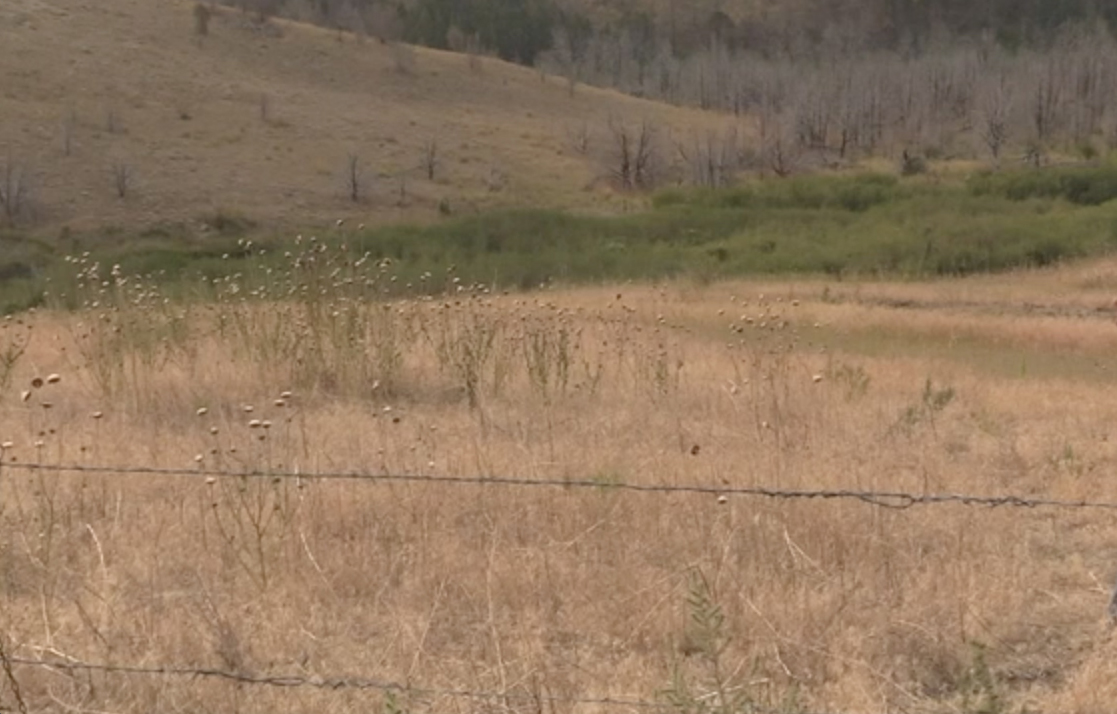
Cheatgrass can quickly create what is essentially a monoculture. But by focusing on removal of these kinds of grasses, land managers may not realize they’re creating a prime opportunity for noxious weeds to move in, trading one bad actor for another. Species like knapweed and thistle will thrive in these tough environments, taking moisture away from native grasses and forbs and exacerbating issues for the landscape and wildlife.
Native grasses and forbs provide a vital source of nutrition for big game. Schuldt said, “Native bunchgrasses have the ideal mixes of carbohydrates and proteins and nutrients that big game species need to thrive throughout each of the phases of their lives.” Onsrud noted that bunchgrass also makes for easier grazing when snow is on the ground. “With these bigger bunchgrasses, it’s not like the elk and deer have to paw down to the ground to get the little bit of cheatgrass that’s starting to grow,” he said. “These bunchgrasses will stand up above a bunch of that stuff and it’ll be easier for them to get the nutrition that they need.”
Newer, program approaches to fall control can tackle both broadleaf weeds and annual grasses to benefit both land management operations and the landscape.
With the right fall program approach, land managers can get winter annual grasses under control while preventing the emergence of noxious weeds later in the spring. Fall is an ideal time to take on both species, because plants are at their pre-germination or rosette phase, making them particularly susceptible to herbicide. Most of us think about weed control in the spring, but warmer temperatures cause weeds to start growing and reproducing rapidly, making them very difficult to control. In the fall, weeds are storing energy in their root systems for use in the spring.1 When foliar herbicide is applied in the fall, it’s more likely to translocate in the plant,1 killing the weed before it has a chance to overwinter.
One option to consider in a fall program approach is newly introduced HighNoon™ herbicide with Rinskor® active, which can be tank-mixed with Plateau to provide control of both broadleaf weeds and grasses. HighNoon combines Rinskor (florpyrauxifen-benzyl) with the active ingredient in Milestone® herbicide, aminopyralid. Both of these active ingredients are EPA Reduced Risk pesticides. Rinskor, which is the first new active ingredient available for rangeland and pasture in nearly 15 years, earned a Green Chemistry Challenge Award in 2018.
Rinskor works by attaching to a new binding site on plants. Rinskor is classified as immobile because of its high sorptivity to soil.
While research into the effects of HighNoon on desirable vegetation is ongoing, initial results show an extremely good profile, similar to Milestone,2 but with a broader spectrum of weed species controlled. HighNoon controls 147 weed species, compared to 100 for Milestone.
This approach will also capture noxious weeds with large taproots, including common mullein, Russian knapweed and Canada thistle.
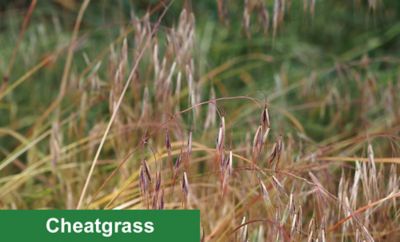

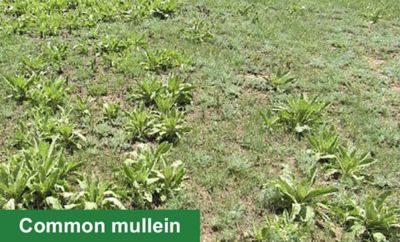
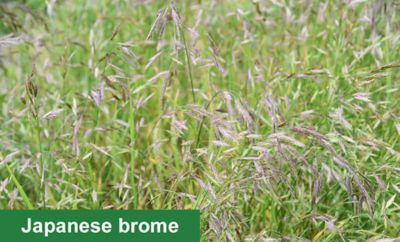
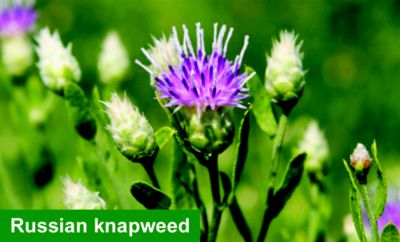

With the ability to control both annual grasses and noxious weeds in the fall, this program approach can eliminate the need for a second trip through the area in spring, saving labor and product costs. However, true control of grasses — and restoring more native grasses and forbs to the landscape — is a multi-year endeavor. Just as these grasses did not take over rangeland and pastures in one season, it will take several years to restore the desired balance.
For land managers using a program approach, the benefits are already becoming visible. In the Bitterroot Valley, a program approach using GrazonNext® HL herbicide against broadleaf weeds in the fall has helped with the return of native grasses and beneficial forbs. With an even more favorable profile for desirable vegetation, similar results are anticipated in areas that use HighNoon herbicide.
Schuldt and Baumann have been watching for seed activity with desirable vegetation since they began their program approach in Salmon-Challis in 2018. “A lot of [desirable vegetation] went ahead and bloomed,” Schuldt noted. “They set viable seed. They may have had reduced biomass, set a little less seed, but they’re going to survive and they’re coming back. And we’ve also actually already seen recruitment. We’re seeing young lupine plants, we’re seeing young balsamroot plants.”
Onsrud has noticed a return of more native plants in the areas he treats as well. “I’m hoping we’ll have a healthier overall herd and we’ll have a healthier whole ecosystem and keep the biodiversity that we’re looking for here,” he said.
1 Halfman, William. “Fall Can Be a Good Time for Pasture Weed Control.” University of Wisconsin Extension, September 22, 2010. https://fyi.extension.wisc.edu/wbic/2010/09/22/fall-can-be-a-good-time-for-pasture-weed-control/.
2 Corteva Agriscience. Field observations. Data on file.
™ ® Trademarks of Corteva Agriscience and its affiliated companies.
Under normal field conditions, HighNoon™ is non-volatile. HighNoon has no grazing or haying restrictions for any class of livestock, including lactating dairy cows, horses (including lactating mares) and meat animals prior to slaughter. However, label precautions do apply to forage treated with HighNoon and to manure and urine from animals that have consumed treated forage.
When treating areas in and around roadside or utility rights-of-way that are or will be grazed, hayed or planted to forage, important label precautions apply regarding harvesting hay from treated sites, using manure from animals grazing on treated areas or rotating the treated area to sensitive crops.
Label precautions apply to forage treated with GrazonNext and Milestone and to manure from animals that have consumed treated forage within the last three days. Consult the labels for full details.
HighNoon and Milestone are not registered for sale or use in all states. Contact your state pesticide regulatory agency to determine if a product is registered for sale or use in your state. Always read and follow label directions.
Plateau is a registered trademark of BASF.
© 2022 Corteva.
Sharing innovative research, success stories and tips with invasive plant managers.
